About
We have been selling high quality power tools and tools for professionals for more than 30 years. We manufacture many of the products ourselves. Every detail is carefully thought out and designed with an emphasis on long-lasting quality, reliability and professional performance. The current range of power tools and accesoires covers almost every range of work in the construction and engineering sector, and we structure it with clarity and ease of selection in mind.
We are currently focusing our attention on a new global trend - brushless power tools with extremely high motor efficiency. In the near future, several mains-powered tool models with brushless motors will be added to our portfolio. New models are included in the delivery programme after a thorough assessment of their characteristics and technical parameters, followed by long-term testing under extreme conditions.
The same emphasis is placed on the high quality of our service. With the power tools you get a three-year warranty. All repairs are carried out in our central service centre and guarantee a professional and individual approach. What's more, you don't need to present any invoices or warranty certificates - each tool has its own unique number, which we can use to identify it. We are also very happy to advise you on any technical issues via our online Technical Advice Service and our regular Newsletter.
Videogallery
HERMAN Production video
HERMAN Brand video
HERMAN Commercial video
History
In the world
Establishment of the company

The first leased premises in the building of the former post office in Revúca certainly still remember the beginnings full of enthusiasm and excitement from the unknown... Even the patrolling policemen had to get used to the fact that it was lit there long into the night...
At the beginning of the business it was the sale of electronic components and digital multimeters and the sale, assembly and service of public radio stations. The first name of the company was also adapted to this: HERMAN elektronik.
The change in orientation towards the construction and engineering sector occurred in a few months...
500th anniversary of the discovery of America (1492)

"You will never discover the ocean if you are afraid of losing sight of land" (Christopher Columbus)
The Italian navigator Christopher Columbus (* between August 25 and October 31, 1451, Genoa - † May 20, 1506, Valladolid) wanted to find a way to India across the Atlantic, relying on Copernicus' theory about the roundness of the Earth.
3. August 1492 he set out with the ships Santa Maria, Pinta and Niña to discover the western route to India. On October 12, he sailed to the island, which he named "San Salvador". Although it was the Bahamas, Columbus believed until the end of his life that he had reached India. That is why he called the natives Indians. The Italian navigator Amerigo Vespucci was the first to realize that Columbus had discovered a new continent, which is why America was named after him.
source: https://sk.wikipedia.org/wiki/Objavenie_Ameriky
First catalog | The first information system

The first product catalog was processed by hand - images of drills, dowels, anchors, discs and other tools were cut out from various brochures and pasted on A4 office paper exactly to the pre-prepared text. Subsequently, the pages were copied from the "originals" prepared in this way on a copying machine and bound with comb binding.
The basics of the first information system under the name INFOSYS were implemented by the roaring software company SOFT ANARCHY - this information system served with minor changes until 2003.
100th Anniversary of the Diesel Engine (1893)

Moving to new leased premises

Already at the beginning of the year, the premises of the post office were not sufficient.
The warehouse was created from a rented empty house in a nearby street.
There was no courier service - goods were transported to customers as "express goods" by train. Packaged orders were taken to the railway station in Revúca on a two-wheeled cart. This truck was the first investment in the "vehicle fleet" of the company.
A few months later, even this was no longer enough...
The Lesostavu campus, which had free space and to which the company moved at the end of 1994, initially appeared to be a good step.
However, after privatization in 1997, the owner changed and he threatened to resign with his megalomaniacal plans. Only an agreement that was not fair for the company - but there was no other option - made it possible to get 12 months of extra time. This was exactly enough for the company to look for land, buy it, have a project drawn up, get a building permit and a bank loan and build its first premises (see year 1997).
Ayrton Senna died tragically - a fighter for greater safety of the F 1 race (1994)

"Clean driving, real racing, that's what makes me happy" (Ayrton Senna)
Ayrton Senna (* March 21, 1960, São Paulo - † May 1, 1994, Bologna) was a Brazilian F1 racing driver. He won the world champion title three times in his career.
The "black weekend" came and the Grand Prix of San Marino - the third event of the F1 calendar in 1994. The event started with Friday practice, in which his compatriot Rubens Barichello had a serious accident. The next day, Saturday, there was another crash during qualifying, but this time with a much more tragic ending. Austrian Roland Ratzenberger was killed in it. Senna won pole position that day.
The morning before his fateful ride, the other pilots chose Senna as their spokesman and together they wanted to force the organizers to increase safety and prevent further accidents. The Brazilian was determined not to stand at the start and race. However, Ayrton did not "move" with the organizers and finally entered the race anyway.
On Sunday, May 1, 1994, on the seventh lap, when entering the Tamburello corner, the right front wheel of his Williams failed and he crashed into the wall at a speed of 300 km/h. He succumbed to his injuries on the spot.
However, his death saved many lives - it forced the organizers to tighten the safety regulations of F1.
source: https://sport.aktuality.sk/c/43773/ayrton-senna-pretekar-ktory-zomrel-pre-dobro-ostanych/
Registration in Geneva | The first sales representatives

We registered the trademark internationally in Geneva, Switzerland.
This created a good basis for the protection of our intellectual property and ensured the possibility of further development under our own brand.
The first sales representatives moved to customers on foot or by bus. The company's product portfolio began to consist of technical products, the sale of which at that time required professional interpretation and training. Many of them were novelties on the Slovak construction market. Therefore, the management of the company decided to hire sales representatives.
Professional training was conducted by the founder of the company, training materials were created on the fly and at night from various professional magazines.
There were no company cars or mobile phones. The first sales representatives visited customers according to the prepared "tour plan" and during the training it was explained to them why feet are so important for a person...
For communication with the company, they received phone cards and made calls at set times from public phone booths. The first mobile phone was purchased for the company only in 1996.
It wasn't until 1997 that company cars - red felicias and company mobile phones - were available to sales representatives.
200th anniversary of the hydraulic press patent (1795)

Without this invention, we would not be making cutting and grinding tools today...
The first hydraulic press was invented by Joseph Bramah (* April 13, 1748, Stainborough - † December 9, 1814, Pimlico, London). It works on Pascal's principle - the pressure change in a closed system is constant. The press had two cylinders and pistons of different cross-sectional areas. If a force was applied to the smaller piston, it was reflected in a larger force on the larger piston. The difference in the two forces was proportional to the difference in the area of the two pistons. In effect, the cylinders act much like a lever used to increase the force exerted. A hydraulic press is a mechanical machine used to lift or compress large objects.
source: https://en.wikipedia.org/wiki/Joseph_Bramah
First participation in an international exhibition | Establishment of a subsidiary company in Belarus

The company participated for the first time at the CONECO construction fair in Bratislava.
The public presentation was an important step towards rapid development. At that time there was no Internet - presentation at exhibitions appeared to be an effective tool for acquiring potential customers.
Belarusian subsidiary
Friendship from the time of service in the army continues to this day.
A former "fellow soldier" from the days of the "Warsaw Pact" ended his service in the army and founded our first foreign subsidiary.
The Dancing House (1996) was completed in Prague, Czech Republic

The building is an example of destructive architecture and has won many international awards. Both towers are actually two deformed cylinders. Fred is a male figure made of concrete and has a wider diameter at the top. Ginger is a glass and steel female figure, wider at the bottom, tapering dramatically at the waist and carried with angled legs as if leaning against a male figure. The glass tower's vertical steel T-profiles are double-curved and twisted at the same time, with no two panels alike. However, at first glance, a very complex construction is reduced to a few basic elements.
source: https://sk.wikipedia.org/wiki/Tancujci_dom
Construction of own area: in a corn field
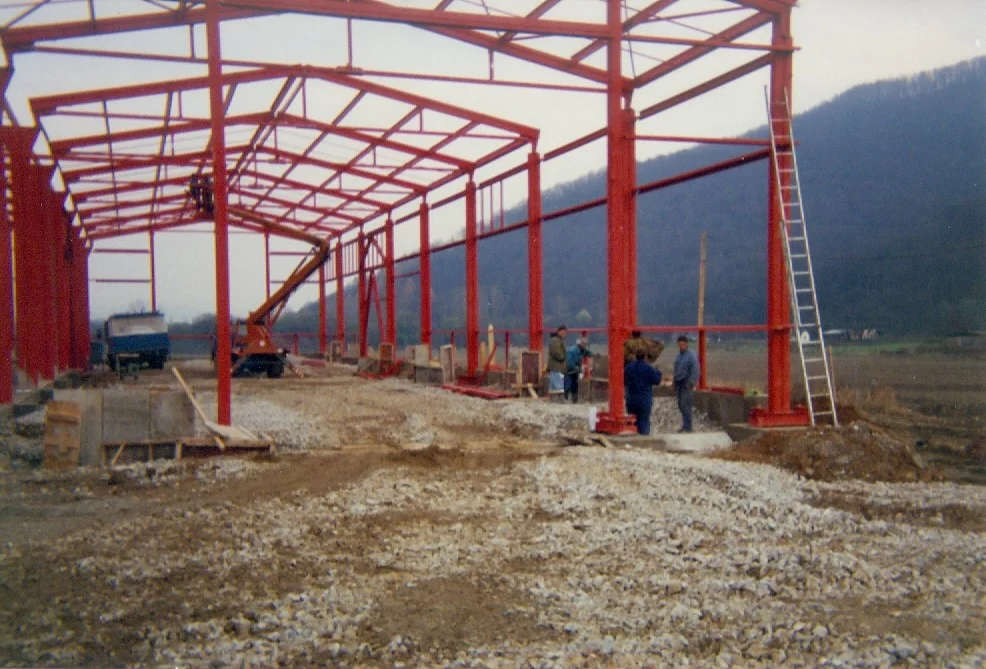
Waiting for the corn harvest...
Literally and literally, we had to wait until the autumn to harvest the planted corn. . 9 months later, the company moved to its own modernly equipped premises. A warehouse concentrated in one place, everyone in their bright office, a telephone switchboard for connecting calls... These were advantages that are now considered a common standard...
50th anniversary of the International Organization for Standardization (1947)

The world's largest developer of voluntary international standards...
The International Organization for Standardization (abbreviated ISO; English: International Organization for Standardization) is an organization coordinating standardization and normalization technical activities on an international scale, with headquarters in Geneva, which was established on February 23, 1947.
In 1951, the first ISO standard (currently referred to as Recommendations), ISO / R 1: 1951 Standard reference temperature for measuring industrial length.
Since its inception, the organization has published over 23,760 international standards covering almost all technological and business aspects.
source: https://www.iso.org/the-iso-story.html#8
Award of the Slovak Republic for quality

Our efforts to provide excellent customer service
resulted in an award given by the Ministry of Economy of the Slovak Republic. Awards that may not be "worn" anymore. However, it motivated us to continue working. Maybe also because the customers were different then, more loyal - the Internet was not developed, there was no Facebook and other social networks. A personal meeting, looking into the eyes and shaking hands was more preferred.
Many of these relationships continue to this day...
200th anniversary of the first battery (1799)

Without laptops, without phones, without the possibility of starting, without battery tools - this is what the world would be like if the battery had not been invented...
The Volt column is the first electric battery in history. It was built by Alessandro Volta (* February 18, 1745, Como - † March 5, 1827, Milan) in 1799.
It consists of several series-connected electric cells with zinc and copper electrodes, separated by felt impregnated with an electrolyte solution. Volta called the ends of the column, copper and zinc, poles. A positive electric charge appeared on one of them and a negative electric charge on the other. If these two poles were connected by wires, a rather strong, long-lasting electric current passed.
In honor of Alessandro Volta, the unit of electric voltage Volt (V) is named.
source: https://sk.wikipedia.org/wiki/Alessandro_Volta
https://sk.wikipedia.org/wiki/Voltov_stĺp
Introduction of the HERMAN LIMIT service

The pinnacle of improving the quality of our services was the express service introduced for Slovak customers - builders, when an adequate replacement was delivered to them within 4 hours of a tool failure and the opportunity to continue working.
The service we introduced had a trade name HERMAN LIMIT and its logo was registered at the Industrial Property Office in Banská Bystrica.
PS After the initial great success, this service was canceled after several years due to its unprofitability as a result of increasing pressure on the price of tools.
Emil Zátopek died (2000)

"If you want to win something, run 100 meters. If you want to experience something, run a marathon" (Emil Zátopek)
Emil Zátopek (* September 19, 1922, Kopřivnice – † November 21, 2000, Prague) was a Czech athlete and representative of Czechoslovakia, four-time Olympic champion in endurance running, husband of athlete Dana Zátopková. At the same time, he was the first person in the world to run 10 km under 29 minutes (28:54.2 - June 1, 1954 in Brussels) and 20 km under one hour (59:51.8 - September 29, 1951 in Stara Boleslav). But he became most famous for running during the 1952 Olympic Games in Helsinki, where he won the 5 km, 10 km and even the marathon, which he ran for the first time in his life. At the same time, he set a new Olympic record in each of these disciplines. To this day, no endurance athlete has been able to repeat this "triathlon". Zátopek, known for his elaborate running style, accompanied by convulsive grimaces, was nicknamed the "Czech locomotive" abroad.
source: https://cs.wikipedia.org/wiki/Emil_Zátopek
Direct sales through sales representatives

At that time, personal contact was key for business.
For further development, it was essential and at a certain period we had up to 50 sales representatives who were in the field every day. We trained and trained them with considerable effort, but many of them thanked themselves by going to the competition. In some cases it was a big disappointment that had to be put up with.
Terrorist attack on the World Trade Center in New York "Gemini" (2001)

The attacks of September 11, 2001 unexpectedly affected the whole world...
Four commercial planes were hijacked by nineteen men from the militant Islamic organization al-Qaeda. Two planes crashed into the Twin Towers of the World Trade Center in New York, causing both towers to fall. The third plane crashed into the west wing of the US Department of Defense headquarters - the Pentagon in Virginia. A fourth plane crashed into an uninhabited area in Pennsylvania after some passengers and crew tried to get the plane under their control. No one on board these planes survived. The attacks resulted in approximately 25,000 wounded and 2,977 victims (+ 19 terrorists).
source: https://sk.wikipedia.org/wiki/Útoky_z_11._september_2001
Patent HERMAN no. 2911/2002

The electronic chip, mounted in the tool, allowed us to "read" the number of hours of net working time of the electric tools and implement many improvements to increase their service life. It was produced "by hand" on a printed circuit board, today it is possible to use microchips for such purposes.
100th anniversary of Ford Motor Company (1903)

"Quality means doing it well even when no one is watching." (Henry Ford)
Henry Ford (* July 30, 1863, Wayne County, Michigan, USA - † April 7, 1947, Dearborn, Michigan,) was an American inventor and entrepreneur, a pioneer of the automobile industry.
He was the first to start producing cars on the assembly line, which enabled the mass production of affordable cars. This popular car was the legendary Ford T, of which an incredible 15,007,034 units were produced and sold from 1908 to 1927. This achievement marked not only a revolution in industry, but such a great influence on modern culture that many theorists call this period of economic and social history "Fordism".
source: https://sk.wikipedia.org/wiki/Henry_Ford
Construction of the second warehouse | Establishment of a subsidiary company in Moscow

The euphoria of being successful, the knowledge of the language and the determination to step into the unknown led us to establish a subsidiary company in Moscow.
They say that "a bad beginning - a good end".
First a mistake in the selection of management, she caused that after half a year the entire management of the subsidiary company, mostly made up of Russians, had to be dismissed. And that was not at all easy in "Russian" conditions...
However, after the dissolution of the management, it was necessary to make a decision and act very quickly, especially considering the amount of investment in the start-up of the subsidiary.
There was no other option - Herman Nagypál took over the management own subsidiary company as its manager and director in one person. And together with two other colleagues, he stayed there for more than 3 years... Three weeks in Russia, one week at home. Three years of such a carousel - until 2009.
Slovakia - a tragedy when returning home (2006)

The biggest air disaster in the history of the independent Slovak Republic.
An Antonov An-24 of the Air Force of the Slovak Republic crashed in the dark and under favorable meteorological conditions into a wooded hill during a landing maneuver on January 19, 2006 between the villages of Hejce and Telkibánya in Hungary. It was only 3 km from the Slovak border and only 20 km from the airport. The plane was bringing home Slovak KFOR members from their half-year service in Kosovo. 41 soldiers and 1 civilian employee of the Slovak Ministry of Defense were killed in the plane crash. Only one of the soldiers survived the accident - first lieutenant Martin Farkaš.
Honor to their memory!
source: https://sk.wikipedia.org/wiki/Letecké_nešťastie_slovenského_An-24
Sales development in Russia

The company moved from Moscow to the Moscow region - to the Stupin district - in order to reduce operating costs and rent premises under more favorable conditions for business. Although the comfort has been lost, the distance from the airport to the company has increased from 10km to 100km, but even that is just a habit - and in Russian standards it is "rjadom" - just around the corner. However, those three years were not in vain...
Personal visits to large Russian engineering and construction companies - not infrequently with several thousand employees - brought priceless experience. Sometimes two days were traveled to make a one-hour meeting. Not an everyday thing for a European in our region.
Business trips to Russia were very long. More than 50,000 km per year were driven on the company Volga or Oktavia in all directions - especially in Rostov-on-Don, Krasnodar Region, Stavropol, Nizhny Novgorod, Bryansk and many other cities...
50th Anniversary of the Optical Laser (1958)

Today, the laser is widely used in various fields: when reading barcodes in shops, during various medical operations, for measuring in construction and geodesy,
in the clothing industry for cutting up to several hundred layers of fabric at the same time, during the precise machining of parts or the production of holograms. It also found significant application in location and navigation in air transport, in the monitoring of pollutants in the air, or in telecommunications technology.
Gordon Gould (* July 17, 1920, New York City – † September 16, 2005, New York City) was an American physicist who was credited with the invention of the laser used in optical measuring instruments.
By 1957, many scientists were looking for a way to achieve laser-like amplification of visible light. Gould realized that it was possible to make a suitable optical resonator using two mirrors in the form of a Fabry-Pérot interferometer. Unlike previously considered designs, this approach would produce a narrow, coherent and intense beam. Since the sides of the cavity did not have to be reflective, the gain medium could easily be optically pumped to achieve the necessary population inversion.
Gould is also known for his thirty-year battle with the US Patent and Trademark Office to obtain patents on the laser and related technology .
source: https://en.wikipedia.org/wiki/Gordon_Gould
On the verge of death

A very difficult period for the company, a drop in sales practically overnight by more than 70%. Especially in the first months, the crisis affects the entire world very noticeably, and the losses, especially in the Russian Federation, are practically irreplaceable. At the time of the crisis, direct sales were well established within a radius of almost 1,000 km from Moscow, and more than 100 sales representatives worked in the company. However, the blow was so strong that the subsidiary had to be reduced to a minimum within a few weeks and the entire business was turned over to the newly formed company of one of our Russian employees based in Bryansk and continues to this day. and the parent company in Slovakia. Hard cost savings followed. The company coffee machine was also sold - and people went to the gas station once a week for coffee. Even that only for a reward.
Many people leave the company, the most loyal remain. A period that tested characters. The company is on the verge of bankruptcy, but it fulfills all obligations to customers, including warranty service, without reservation.
World economic crisis, collapse of American banks (2009)

The impetus was the real estate market crisis in the USA,
which arose as a result of the provision of risky mortgages to a population group with a lower standard of living. Banks obtained them by offering low-interest loans. However, within 1-2 years, the interest started to rise and the borrowers were unable to repay. The American dream of housing began to dissolve quickly and financial markets collapsed. Investors began to get rid of risk holdings and stock markets in Europe, Asia and the US began to collapse. At the beginning of 2009, the monthly indicators monitored by the Commission between consumers and entrepreneurs achieved the worst results since 1985. Governments adopted anti-crisis measures across the board. The first three months of 2009 were extremely difficult for EU member countries. Eurozone gross domestic product fell by 2.5% quarter-on-quarter. The negative economic climate at the beginning of the year had the biggest impact on Slovakia's economy, which fell by 11.2%. During the first quarter of 2009, a total of 1.22 million jobs were lost in the eurozone.
source: https://euractiv.sk/section/ekonomika-a-euro/linksdossier/financna-kriza-000227/
Introduction of the "telesales" sales channel
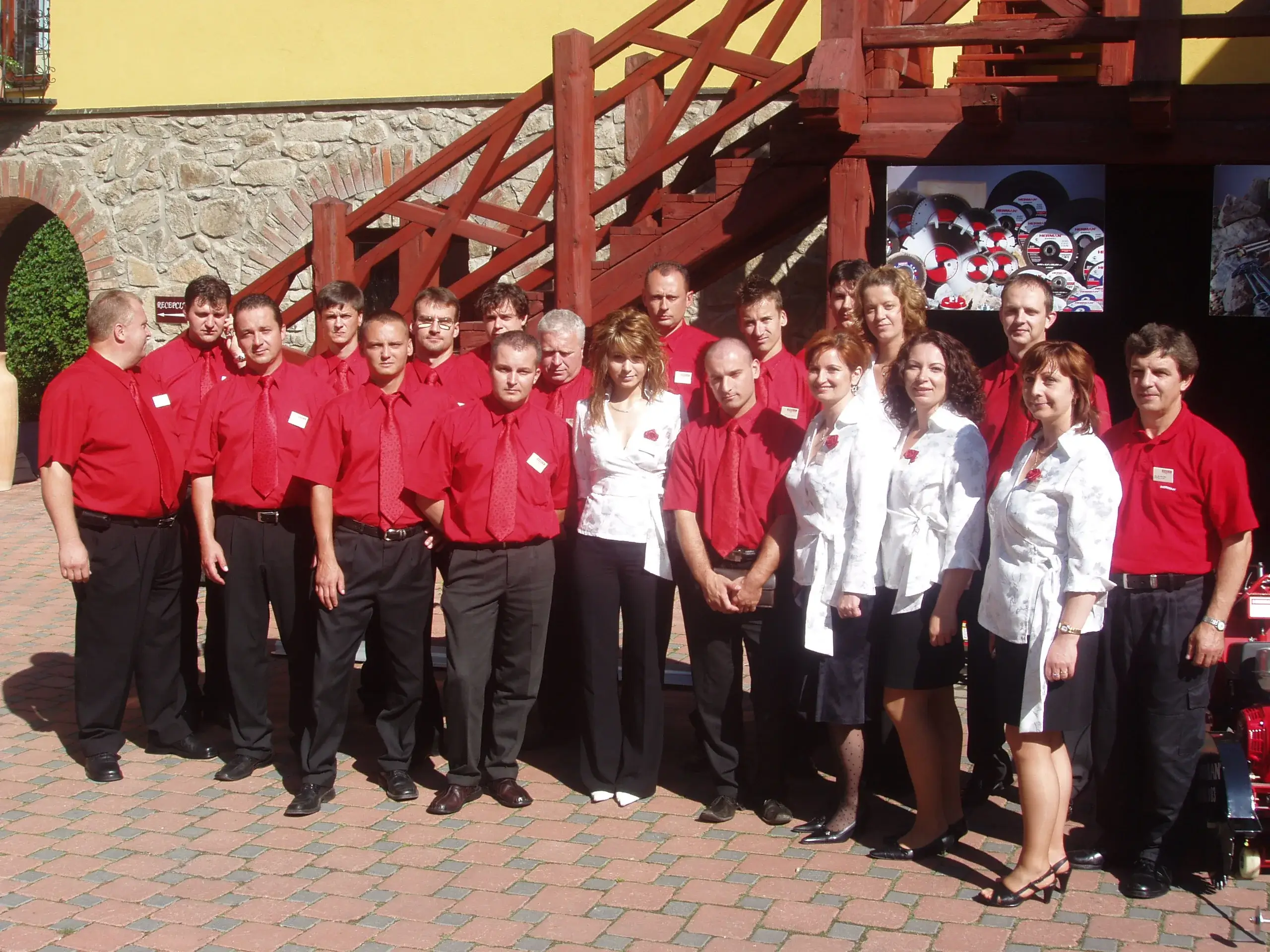
The company is getting back on its feet. Expansion of low-cost telesales to the Czech Republic - sales mainly to end customers. Thankful again for every order and every Euro paid. The company survived a period that strengthened all those who remained...
Strengthened by the experiences of a lifetime, the company rose from the ashes, escaped the gravedigger's shovel and stepped forward again...
100th anniversary of the compilation of the Mohs scale of mineral hardness (1912)

Diamond and corundum grains are also among the hardest materials in our tools.
It was compiled by Friedrich Mohs (* January 29, 1773, Gernrode - † September 29, 1839, Agordo near Belluno, Austrian Empire) as a ten-member group arranged in such a way that each harder mineral digs into the previous softer one. We can roughly estimate the hardness of minerals by simple means: 1. talc - can be grated with a fingernail, often soft and soft to the touch, 2. halite (rock salt) - can also be partially damaged by a fingernail, 3. calcite - can be dug with copper to the hardness of the third degree with a coin or wire, 4. fluorite - can be dug with a steel knife, 5. apatite - can be dug with a steel knife, 6. orthoclase (feldspar) - minerals with a hardness higher than 6 pick into glass, 7. quartz - minerals with a hardness higher than 6 pick into glass, 8. topaz - cannot be dug even with a file, often sparks when drawing, 9. corundum - cannot be dug even with a file, often sparks when drawing, 10. diamond - cannot be dug even with a file, often sparks when drawing.
source: https://sk.wikipedia.org/wiki/Mohsova_stupnica_tvrdosti
Adoption of the strategic plan and establishment of HERMAN Group as

The chairman of the board and the main shareholder is the founder Herman Nagypál. The joint-stock company becomes the owner of HERMAN SLOVAKIA DISTRIBUTION s.r.o. and the company continues to develop.
A ten-year strategic plan is adopted, decisions are directed towards the start of production in Slovakia. New worries, new challenges...
250th anniversary of the invention of the double-acting steam engine (1763)
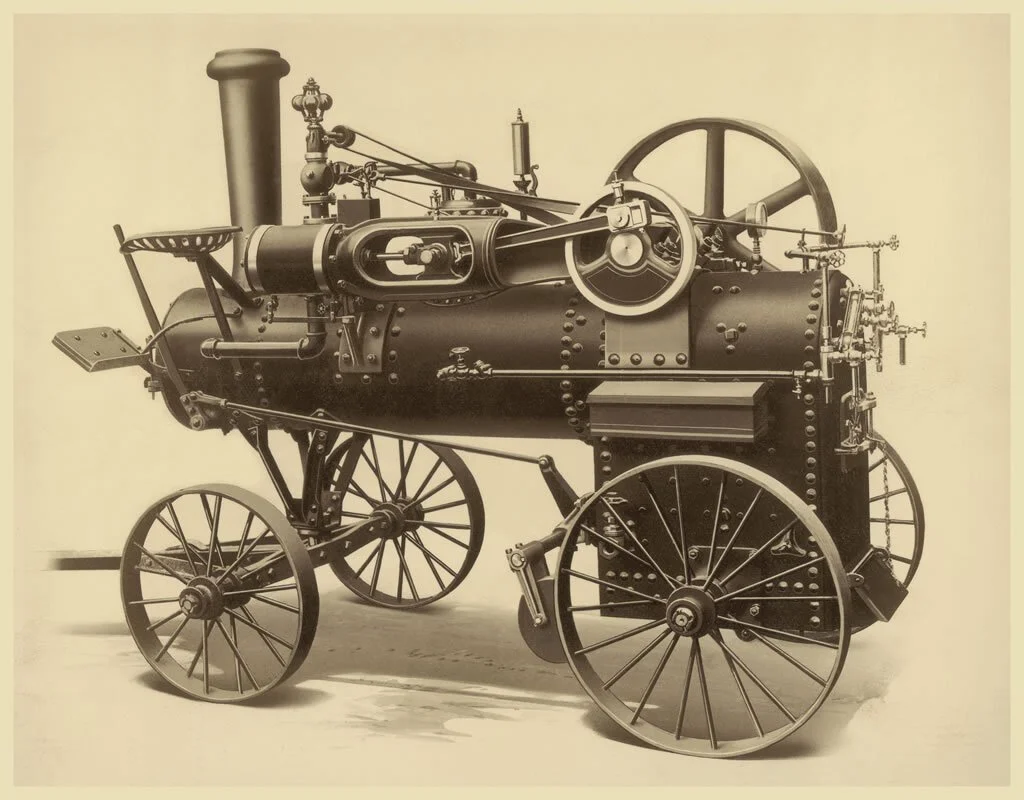
"I can think of nothing but this machine..." (James Watt)
James Watt (* January 19, 1736, Greenock, Scotland - † August 19, 1819, Handsworth, England) was a Scottish mechanic, inventor and physicist - self-taught.
In 1763, he was entrusted with the repair of Neuromen's steam model device. Watt not only fixed it, but also tried to improve it. The machine used water vapor for several strokes of the piston, but then it was necessary to wait for new steam to form in the cauldron. After months of intensive thinking and various experiments, the inventor found a solution. The steam must be condensed not directly in the steam cylinder, but in another container connected to the cylinder. So he invented the condenser and when he subsequently closed the cylinder on both sides with lids, a double-acting steam engine was born.
James Watt introduced the unit horsepower (horsepower), which was later replaced in the SI system by the Watt unit named after him.
source: https://sk.wikipedia.org/wiki/James_Watt
First participation in an international exhibition in Cologne, Germany
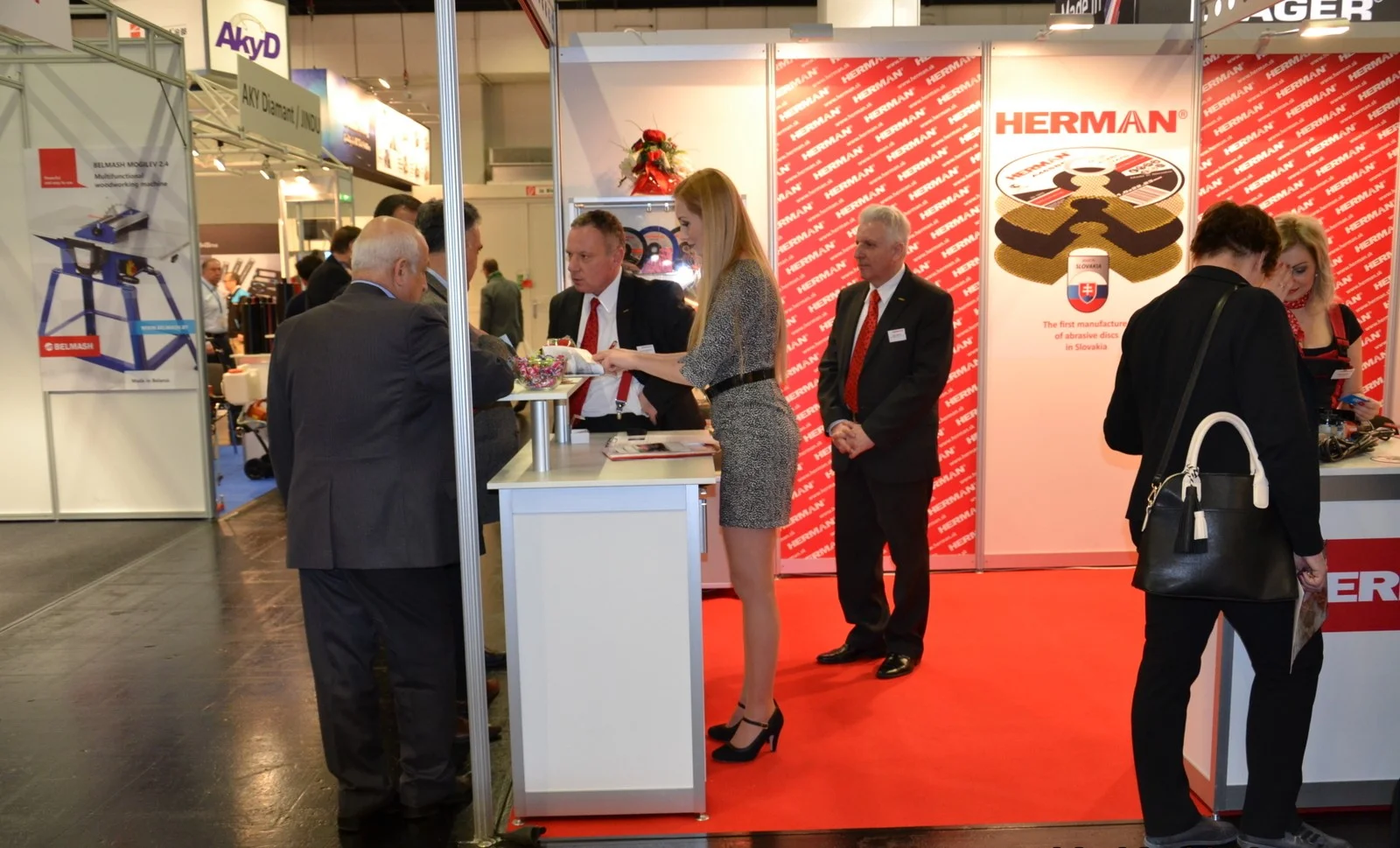
The company obtains the first international contracts, bought the first machines and is preparing to start operations for its own production of cutting and grinding abrasive tools. He receives valuable advice from experts in the field, invests in the development of recipes...
100th anniversary of the invention of the parachute (1914)

Slovak inventor Štefan Banič built the first actively used parachute.
Štefan Banič (* November 23, 1870, Neštich – † January 2, 1941, Neštich) was a Slovak worker and inventor.
In 1912, he witnessed a plane crash. This did not leave him cold, and in 1913 he constructed the first usable parachute based on the principle of an umbrella, which opened with a system of several springs. The parachute had a so-called problem solved. floating in the air and was fastened with the help of straps to the pilot's body in the chest area under the shoulders. The principle was a telescopic structure of the umbrella type, which carried a tissue covering. On June 3, 1914, Štefan Banič personally tested a parachute in front of representatives of the US Air Force Patent Office, jumping from the roof of a 15-story building in Washington. Then followed other jumps from the plane. On August 25, 1914, the US Patent Office in Washington issued a patent for Banic's parachute under the number 1,108,484.
source: https://sk.wikipedia.org/wiki/Štefan_Banič
Start of own production of cutting and grinding tools
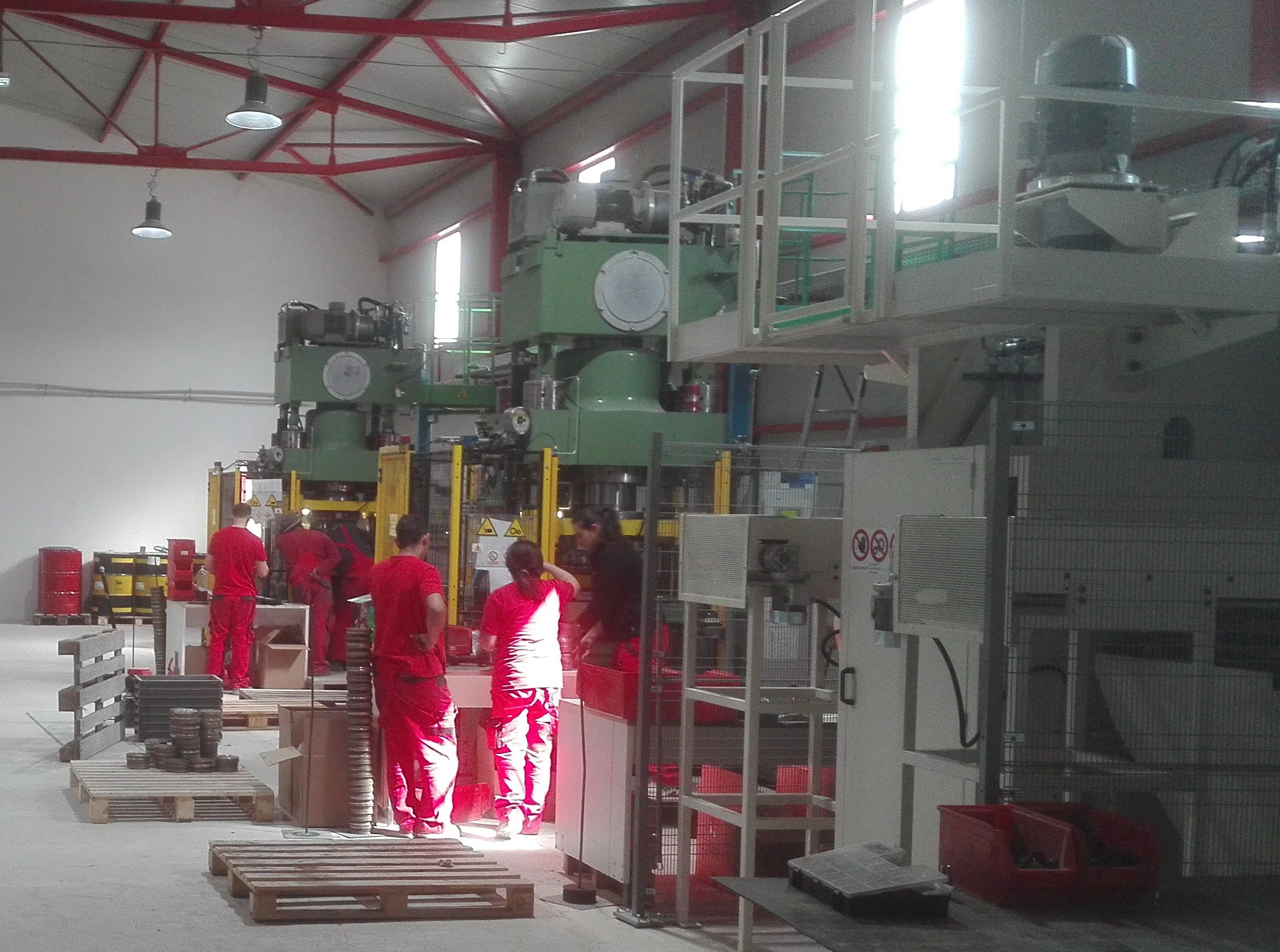
The dream came true...
Already at the beginning of the company's existence, when the founder of the company personally visited many foreign production plants, a dream was born - one day to have its own production. The launch of the first test series of our own products is preceded by intensive preparatory work - clearing the premises of one of the halls, carrying out the necessary construction modifications, installing electrical and air supply lines, preparing an air-conditioned room for storing raw materials and many other steps. The company had to get to know and understand in detail the laws of the production process of abrasive discs, get to know the technology, learn to operate the machines, get to know the properties of the raw materials. It was a very exciting year.
250th anniversary of the first restaurant in the world (1765)

Customer care is the foundation of good service.
Perhaps even before 1765, there were various catering facilities, but the restaurant as we know it today and with its name was created in Paris in 1765, when chef Monsieur Boulanger established a business near the Louvre Museum. His goal was to serve a so-called "restaurer" diet, that is, one that supplied his customers with all the necessary nutrients. The diet at that time was not very nutritious and Mr. Boulanger's soups (his exact name is unknown, in translation the name means baker) were just what the Parisians needed. This is where the word restaurant comes from, from the French word restorer, meaning to heal or refresh.
source: https://sk.erch2014.com/obrazovanie/89331-istoriya-restoranov-s-samogo-ih-poyavleniya.html
https://sk.vvikipedla.com/wiki/Restaurant
Produced more than 1 million pieces of abrasive tools per year

Each produced series of discs brought with it new experiences and the joy of success. In the early years, the company used one mixer for mixing the mixtures, two hydraulic presses and two smaller furnaces in production. With increasing domestic and foreign orders, this equipment soon proved to be insufficient, despite the fact that it produced more than one million pieces of abrasive tools annually...
150th anniversary of the discovery of the dynamoelectric principle (1866)
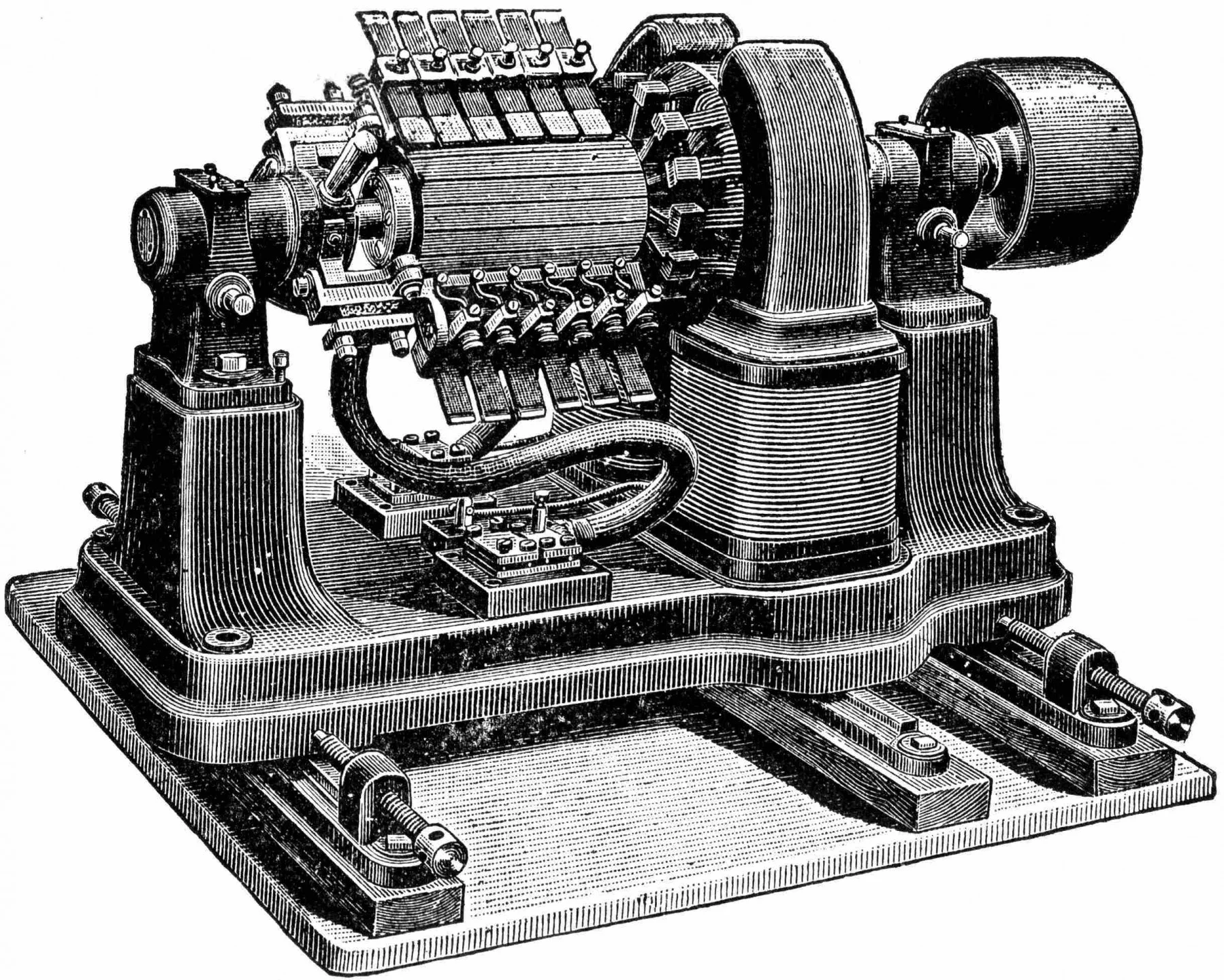
"It is not a matter of going head against the wall, but rather of finding the door with your eyes." (Ernst Werner von Siemens)
Ernst Werner von Siemens (* December 13, 1816, Lenthe, Kingdom of Hanover - † December 6, 1892, Berlin, German Empire) was a German inventor and industrialist who discovered the dynamoelectric principle. This discovery made it possible to build large direct current generators without the use of permanent magnets. The name "dynamoelectric" was later shortened to "dynamo".
Until the advent of semiconductor rectifiers, the dynamo was the most important source of electrical energy (in the form of direct current) in industry and in transport.
source: http://www.odbornecasopisy.cz/elektro/casopis/tema/138-let-od-objevu-dynamoelektrickeho-principu--13527
https://sk.wikipedia.org/wiki/ Dynamo
Expansion of production capacity | Start of production of lamella discs
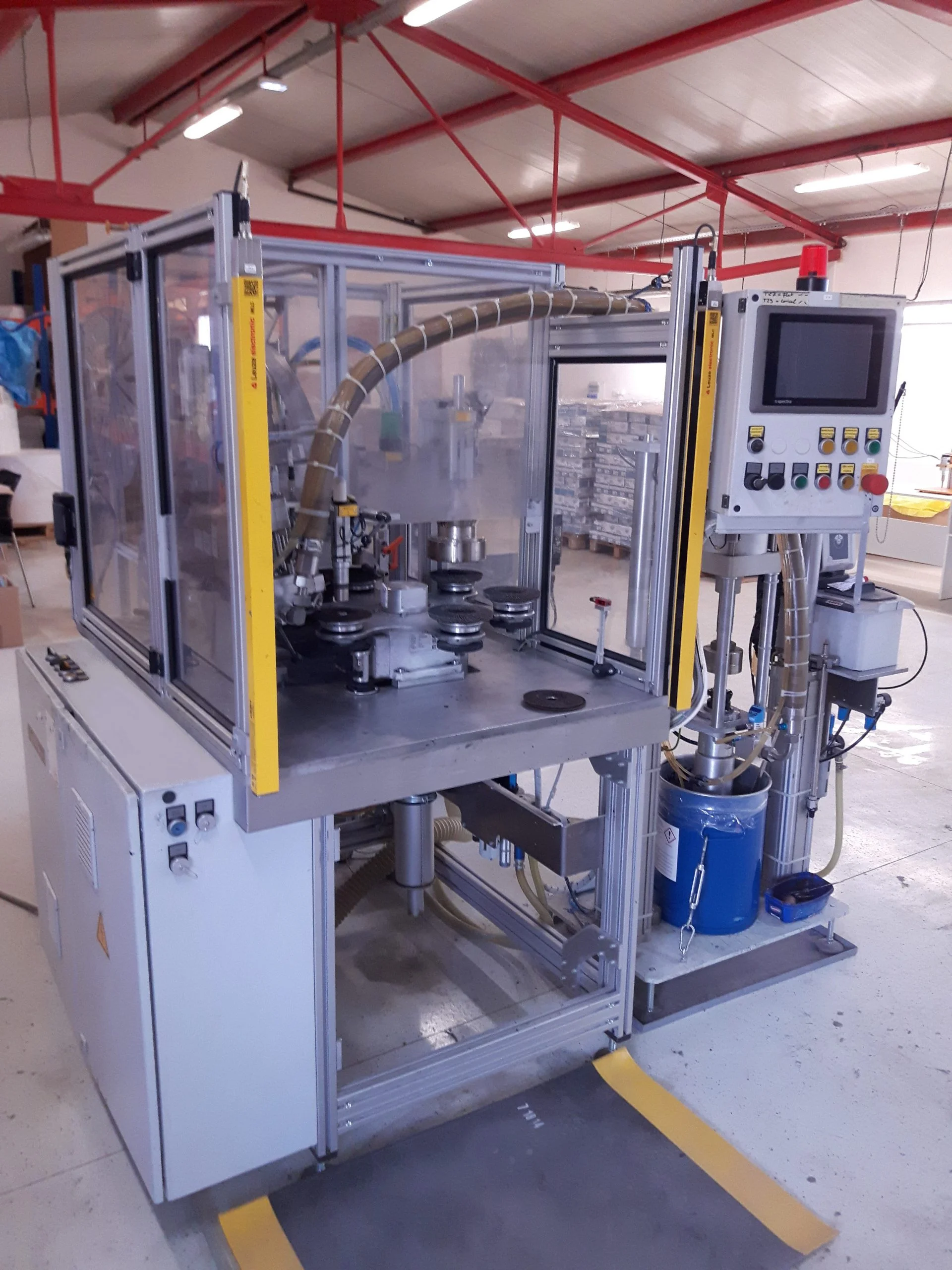
After some time there was a need to expand the production operation...
In order for the company to be able to continue fulfilling all orders on time, it needed to increase its production capacity. The solution was supposed to be additional machines - rotary presses, which achieve 2.5 times higher productivity. The daily production capacity thus increased from the original 6,000 pieces to 21,000 pieces of cutting discs with a diameter of 125 mm. The company also expanded production by four large-capacity firing furnaces and two hydraulic presses for the production of discs of larger diameters.
Starting the production of our own lamellar discs
Lamella grinding discs are closely related to cutting and grinding abrasive discs. They are also used for metal processing. After four years of experience with own production, the company decided to include these products in the production program. She purchased a machine for the production, for automatic labeling and marking of lamellar discs, and she successfully mastered the new production process in a very short time.
150th anniversary of high-speed steel HSS (1868)

Without this invention, we would be missing not only drills and saw blades...
In 1868, the English metallurgist Robert Forester Mushet (* April 8, 1811 – January 29, 1891) developed the so-called special Mushet steel (RMS), which was also known as self-hardening steel or air-hardened steel. Before Mushet steel, steel had to be quenched to harden. Mushet steel is considered the first tool steel and the forerunner of modern high-speed steels. It consisted of 2% carbon, 2.5% manganese and 7% tungsten. Over the next 30 years, the most significant change was the replacement of manganese (Mn) with chromium (Cr). Later, it led to the discovery of high-speed steel.
High-speed steel, also known as HSS (high speed steel), is a steel designed for machining at high speeds and thick chips (chips). It is very hard and remains hard even after overheating (heat resistant). It is a high alloy steel. It contains 2-3% carbon and up to 30% other alloys such as chromium, vanadium, cobalt, molybdenum, tungsten and titanium. It is mainly used for the production of clamped tools.
source: https://en.wikipedia.org/wiki/High-speed_steel
The first robotic production line

A year of many changes ...
21. century brought with it the fourth industrial revolution in the form of massive more advanced automation and robotization of production and the global introduction of smart technologies. In 2020, the company launched the first fully automatic robotic production line for the production of 230 mm cutting tools and plans to continue this trend in the coming years...
200th anniversary of Ampere's law (1820)

"The only way to make a man happy is to make him better." (André-Marie Ampére)
André-Marie Ampère (* January 22, 1775, Lyon, France - † June 10, 1836, Marseille) was a French mathematician, physicist and philosopher. He was an important researcher, after whom the unit of electric current flow, the Ampere, was named, which expresses the amount of passing charge per unit of time.
After the discovery of electromagnetism, H. Ch. Oersted, Ampère began to devote himself to this field in the fall of 1820 and discovered Ampère's law (on the interaction between conductors through which a current flows) and Ampère's rule (on the rotation of a magnetic needle by an electric current). Ampere's law describes the magnetic field on a closed loop in relation to the electric current passing through the loop. Ampere's law was officially formulated mathematically in 1822.
source: https://sk.wikipedia.org/wiki/André-Marie_Ampére
Installation of photovoltaic cells

The road to savings and how to be more eco friendly...
In times of climate change, many companies and households are concerned with the issue of renewable energy. Add to this the energy crisis, which has resulted in extraordinary energy price increases, and the decision is more or less clear-cut. In 2022, the company invested in installing the first photovoltaic cells on the roof of the building. It intends to continue this trend and to generate a significant part of the electricity for its own use from solar energy in the future.
100th anniversary of the invention of the first grinder (1922)

Where does the name flexa or flexo come from?
The history of the grinder dates back to 1922, when Hermann Ackermann and Hermann Schmitt founded the company Ackermann & Schmitt in Germany, today known as FLEX-Elektrowerkzeuge GmbH. The reason for this was the manufacture and sale of their new invention, the MS 6 hand grinder. The grinder of the time was equipped with an electric motor that drove a flexible shaft. In 1954, the same company introduced the first high-speed angle grinder, the DL 9, which is still in production today, except for minor variations in the original design. The design allowed the use of rotary tools with diameters up to 178 mm (today's closest dimension is 180 mm), the shaft of the grinder rotated at a speed of 8500 rpm, which ensured a peripheral speed of the rotating tool of 80 m/s, and it had a respectable motor power consumption for that time - up to 1600 W.
Source: https://en.wikipedia.org/wiki/Flex-Elektrowerkzeuge
Construction of a new warehouse hall

Increasing demands on labour productivity have brought with them the need to optimise warehouse space and workflows for packaging and dispatching goods. In addition to our production and raw material warehouse of more than 1100m², we have added a new warehouse hall for finished products and goods of almost 2000m². The warehouse is equipped with a modern shelving system, conveyor belt and elevator, which facilitate manual work and at the same time increase its efficiency. Software support, camera recordings and double weight control contribute to eliminating the risk of packaging errors.
A year of artificial intelligence

Did you know that the roots of artificial intelligence go back to the 1950s? The term was first used by the father of artificial intelligence, cognitive scientist and computer scientist, John McCarthy in 1956. Since then, artificial intelligence has moved forward rapidly. These systems use machine learning and deep learning algorithms to analyze data, learn from experience, and solve problems. Today, AI is being used in a variety of fields such as autonomous vehicles, diagnosing health problems, automating manufacturing processes, and many more. It is becoming an integral part of the modern world, with huge potential to change the way we live and work.

 International
International
